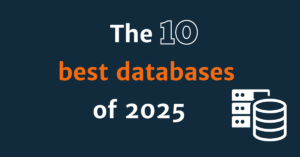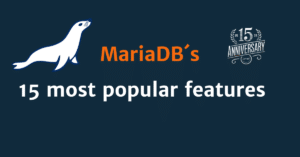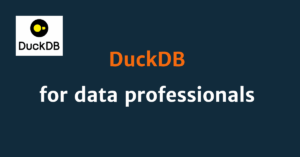Organisations today are faced with the growing need to process updates and reports in real time without duplicating data or relying on complex pipelines. Traditional systems often force a trade-off between transaction speed and analytical depth.
Snowflake’s hybrid tables, which are part of the Unistore workload, eliminate this trade-off. They allow you to run transactional (OLTP) and analytical (OLAP) workloads side by side, on the same platform and with the same data — with low latency and no ETL overhead.
In this article, you’ll learn what hybrid tables are, how they fit into Snowflake’s architecture, what their key features are, and when and how you can use them effectively.
- What are hybrid tables?
- The Unistore engine behind the hybrid tables
- Main features of the hybrid tables
- Frequent use cases
- Comparison between standard and hybrid table
- Internal architecture & indexing
- How to create hybrid tables
- Performance tips & monitoring
- Availability & known restrictions
- Conclusion & next steps
What are hybrid tables?

Hybrid tables are a new type of Snowflake table designed to support high-speed transactions with strong consistency and low-latency access. They are fully ACID compliant and can be directly integrated into analytical workflows.
Unlike standard columnar tables, hybrid tables utilise row-based storage and automatic indexing, making them suitable for workloads with frequent inserts, updates and point queries.
The Unistore engine behind the hybrid tables
Hybrid tables are the foundation of Unistore, Snowflake’s unified approach to OLTP + OLAP.
The main advantages:
- No need to move data back and forth between databases
- Transactional applications can be executed directly in Snowflake
- Real-time analyses are possible without delay
This enables scenarios such as mobile backends, dashboards with live data and applications with business logic — all querying fresh data directly on the spot.
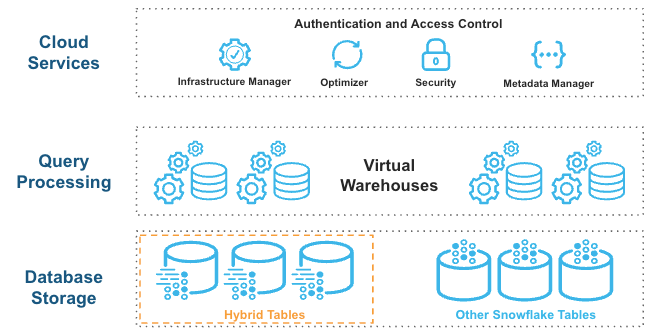
https://docs.snowflake.com/en/_images/unistore-arch.png
Main features of the hybrid tables
✅ Row-based storage for low-latency access
✅ Primary key and optional constraints
✅ Full ACID compliance
✅ Supports INSERT, UPDATE, DELETE, MERGE
✅ Time Travel (up to 24 hours)
✅ Encryption, RBAC and metadata visibility
Frequent use cases
- 📱 App and web session data
- 🛒Order processing and shopping baskets
- 📝Audit logs and operational registers
- 📊Live dashboards with frequent updates
Comparison between standard and hybrid table
| Characteristic | Standard (column) | Hybrid (row) |
| Storage format | Column based | Row-based |
| Support of primary key | ❌ | ✅ |
| OLTP performance | Low | High |
| OLAP performance | Excellent | Good (varies) |
| Insert/update latency | Moderate | Low |
| Concurrency handling | Medium | High |
Internal architecture & indexing
- Write-optimised storage (WOS): Buffers incoming writes
- MVCC: Provides secure isolation for concurrent transactions
- Automated indexing: Manages primary and secondary indexes
- Background compaction: Keeps performance stable without manual tuning
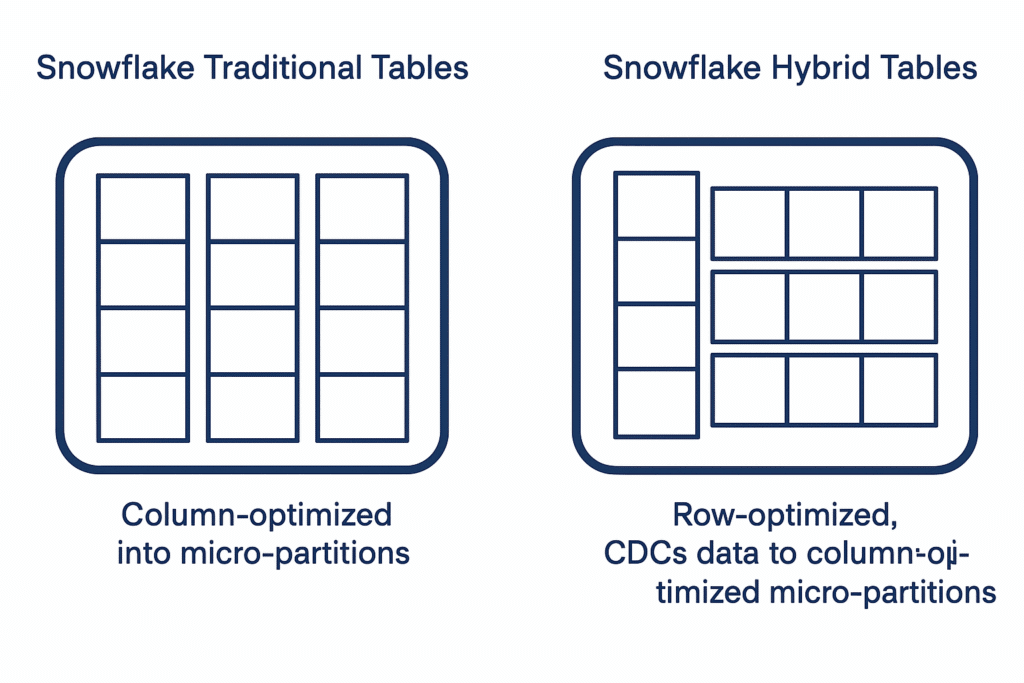
Hybrid tables are designed for write-intensive, simultaneous use:
Snowflake handles all index maintenance and statistics collection in the background. Analytical queries can still benefit from column-based strategies when possible.
How to create hybrid tables
CREATE HYBRID TABLE customer_orders (
order_id STRING PRIMARY KEY,
customer_id STRING,
status STRING,
order_date DATE,
amount NUMBER
);✅ What to consider:
- A PRIMARY KEY is mandatory
- You can define UNIQUE, NOT NULL and other restrictions
- Can be used via SQL, Snowpark or API
Performance tips & monitoring
Best practise:
- Use indexed columns or primary keys in philtres
- Avoid SELECT * and full table scans
- Limit contention by reducing simultaneous updates of the same row
Monitoring tools:
- QUERY_HISTORY, TABLE_STORAGE_METRICS
- HYBRID_TABLE_STORAGE_METRICS
- Snowsight Dashboards
Availability & known restrictions
From the middle of 2025:
- Generally available in all AWS trading regions
- EU availability: Use SHOW REGIONS
Update for bulk loading:
- From 15 January 2025, hybrid tables will support fast COPY, CTAS or INSERT INTO … SELECT operations – but only if the table is empty.
- As soon as data is available, performance returns to normal.
Not yet supported:
- Streams and materialised views
- Time travel limited to AT TIMESTAMP only
- No support for OFFSET, STATEMENT, UNDROP, or Failsafe
Conclusion & next steps
Snowflake Hybrid Tables are changing the way we think about data platforms. By combining OLTP and OLAP in a single system, they reduce complexity, improve flexibility and support real-time decision making.
They are not an instant replacement for all workloads. But where low-latency updates and fast analyses overlap, — they excel.
What Baremon can help you with:
✅ Evaluate whether hybrid tables are suitable for your use case
✅ Design high-performance Unistore schemas
✅ Plan deployment to different cloud providers
✅ Optimise the monitoring and observability of hybrid workloads
Contact Baremon to plan a proof of concept and enable unified, real-time workloads in your Snowflake platform.

